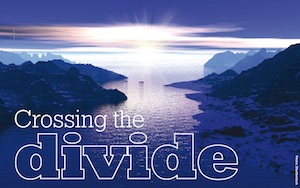Just imagine if the major brand owners – Diageo with Smirnoff, Ciroc with Ketel One, Pernod Ricard with Absolut and Bacardi with Grey Goose – could get the Chinese, Japanese and Koreans to switch from their local white spirits, baijiu, soju and shochu…
Rising consumption
Back to basics. Vodka is around 50% larger than whisk(e)y and 165% larger than rum. Euromonitor predicts global vodka consumption to rise by 3% between 2010 and 2015, excluding eastern Europe. The top five companies account for 24% of global vodka volumes. Inevitably, Diageo dominates with a 7% volume share thanks to a sales growth of 5%, but what is interesting is that its huge umbrella vodka brand, Smirnoff, is, to a certain extent, treading water.
But given that the top five scotch brands account for 74% of global volumes, plus the fact that vodka needs nowhere near the same capital investment in terms of land for warehousing, buildings and barrels for ageing, there is room for smaller and craft distillers.
Premiumisation
The big guns are not having it all their own way when it comes to premium vodkas. Pernod is still working Absolut through its extensive global distribution network. Neither Bacardi’s Grey Goose nor Campari’s Skyy are exactly tearing up trees. Both are perceived struggling in the key US market, possibly because Americans have retreated to their homes and – as there isn’t anyone to impress except their partners – downgraded their drinks choices.
Gail Graham, director at Drinks 21, which has the Heavy Water vodka in its portfolio, says: “The lure of boutique vodka brands begins with how easy they are to buy into. It has become cool to ask for smaller labels to show you are in the know, brand-savvy and actually care about what you are drinking – putting the consumer very much in control.”
With many vodka brands historically appealing to women, or to men who want to impress women, Graham sees Heavy Water as commanding a “masculine, bolder presence”.
Similarly, Russian vodka White Gold Original also pitches at alpha males. CEO Kirill Kirakozov sees the marketing as appealing to “true original man”. He continues: “He is sincere, unintimidated and truthful. He is not trying to be special. He already is. He has a strong character and isn’t afraid of himself. His style is more an inherited quality than a tribute to fashion.” It reads like it was lifted from Russian leader Vladimir Putin’s personal manifesto to the Russian people.
Otherwise, along with flavours, the move to premium continues unabated, as that is where the margins lie. Gillett at Mangrove says: “The growth of premium vodka is interesting and, although driven by Grey Goose and Belvedere, other more niche players, such as Beluga and Konik’s Tail, are proving popular in the on-trade.”
On the definitions of premium, super-premium etc (see panel), Nick Ambridge of ‘super-premium’ Belvedere, says: “I don’t think consumers define it (vodka) like that but internally it helps. Consumers probably understand luxury, boutique/artisanal and standard. Potentially, we get bogged down with definitions in the trade.”
Distillation and filtration
To an extent some of these definitions are based, spuriously, on the number of distillations and filtrations. Gillett says: “The number of distillations was the big selling point until it became absurd. Among the trade it is a bit of a joke with regards to some of the claims. Consumers, however, believe that more distillation and filtration through rare filters make it better. There are global brands that use this info and a nice bottle very successfully.”




